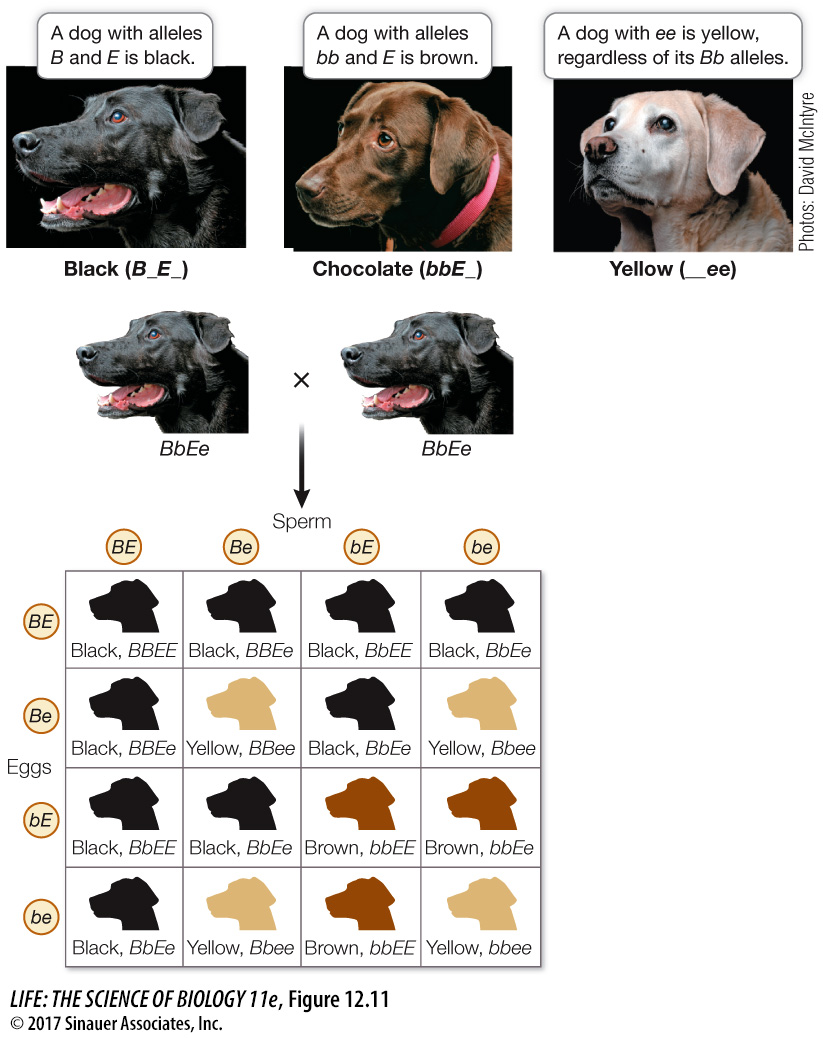key concept 12.3 Genes Can Interact to Produce a Phenotype
You have just seen how two alleles of the same gene can interact to produce a phenotype. Some phenotypes, such as human height, are influenced by the products of many genes, not just alleles of the same gene. We now turn to the genetics of such gene interactions.
focus your learning
One gene may affect the expression of another gene.
The environment can influence phenotype.
Epistasis (“to stand upon”) occurs when the phenotypic expression of one gene is affected by another gene. For example, two genes (B and E) encode proteins that determine coat color in Labrador retrievers:
Allele B (black pigment) is dominant to b (brown).
Allele E (pigment deposition in hair) is dominant to e (no deposition, so hair is yellow).
An EE or Ee dog with BB or Bb is black, and one with bb is brown. An ee dog is yellow regardless of the B gene alleles present (Figure 12.11). Because the product of the E allele is needed for the expression of both the B and the b alleles, E is said to be epistatic to B.

Question
Q: A mating of a yellow and brown retriever produced a black pup. What were the possible genotypes of the parents?
Yellow: BBee and Brown: bbEE.